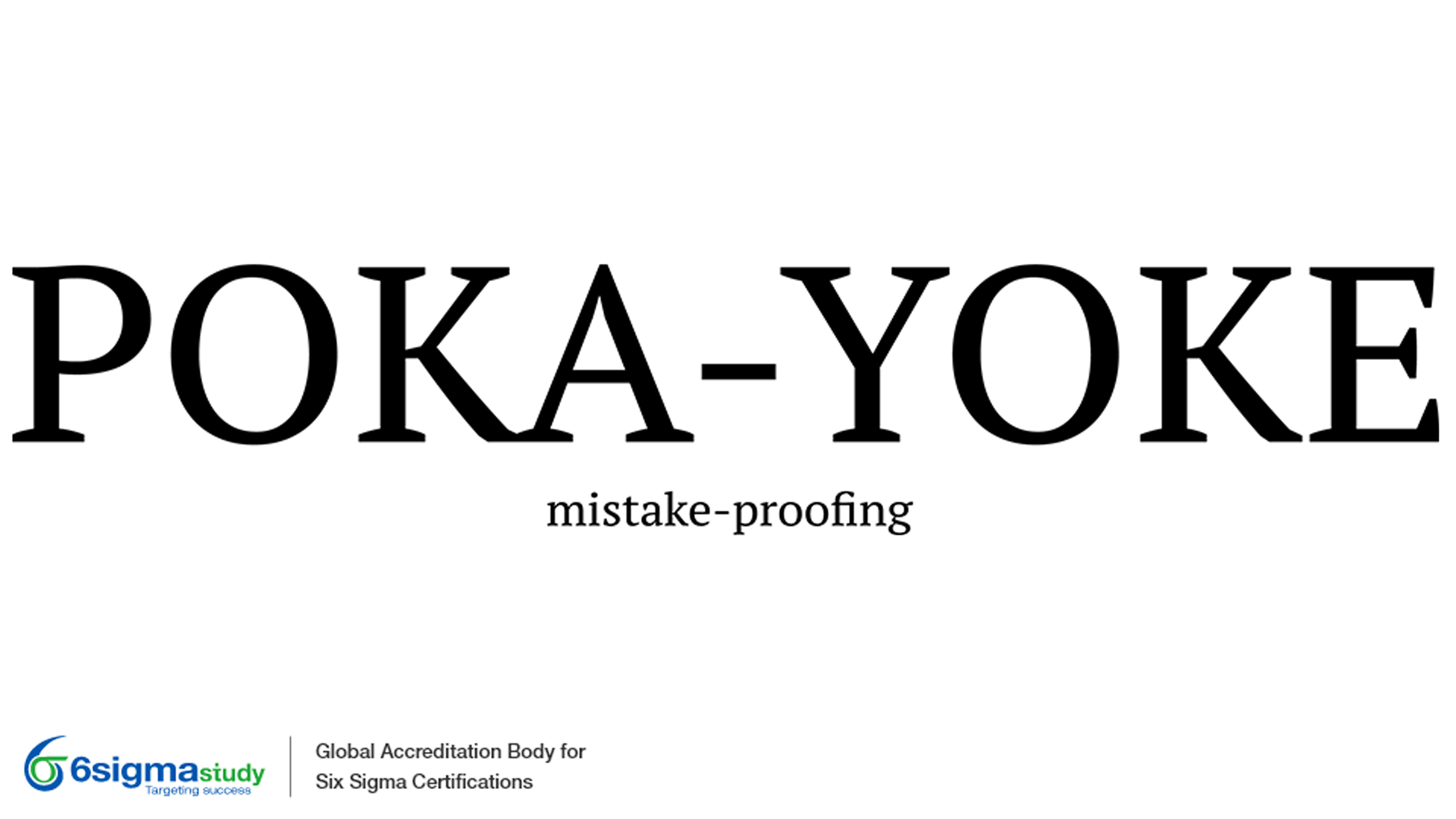Poka-yoke (Mistake-Proofing)
Posted by 6sigmastudy® on September 22, 2023 | Six Sigma Tools
Keywords: Six Sigma 6sigmastudy Six Sigma Yellow Belt (SSYB™) Six Sigma Green Belt (SSGB™) Six Sigma Black Belt (SSBB™) Lean Six Sigma Green Belt (LSSGB™) Lean Six Sigma Black Belt (LSSBB™) Free Articles Free Six Sigma Articles TQM Six sigma define dmaic dmadv
Numerous defects, variations, and inefficiencies within our processes often result from human errors. Poka-yoke (pronounced “poh ka yoke”) serves as a valuable tool for pinpointing process steps prone to errors, enabling companies to proactively implement changes to prevent mistakes prior to the commencement of operations. This tool is straightforward yet highly effective and can be applied across various industries and operations.
History of Poka-yoke
In Japan during the 1960s, the term "poka-yoke" was coined by Toyota engineer Shigeo Shingo. Shingo is renowned as one of the foremost pioneers in the realms of continuous process improvement and operational excellence. This tool guarantees that the necessary conditions are established at each stage of the process, eliminating any potential for defects during operation. Additionally, it identifies and rectifies defects at the earliest possible stage in some instances.
Poka-yoke Procedure
- Develop a comprehensive process flowchart detailing each operation within the process, no matter how minute.
- Thoroughly scrutinize each step to identify potential points where human errors are prone to occur, utilizing techniques such as the 5 Whys method to delve deeper into the root causes.
- Upon identifying every potential error, systematically investigate the process to pinpoint the fundamental source of each error.
- Integrate solutions into the process design to effectively eradicate the risk of errors ever occurring. These solutions may involve either eliminating the error-prone step entirely or substituting it with a foolproof alternative.
- In cases where eliminating the error-prone step is not feasible, the team should brainstorm ideas to minimize the impact should an error occur.
Poka-yoke Example
Poka-Yoke techniques in the context of automated cars (self-driving cars) primarily focus on ensuring safe and error-free operations. Here's an example:
Problem: Autonomous vehicles may unintentionally depart from their designated lanes, posing safety risks to passengers and other road users.
Poka-Yoke Solution: Implement a Lane Departure Warning System (LDWS) that relies on sensors and corrective mechanisms to prevent or mitigate lane departure errors.
In this example, the Poka-Yoke system is the Lane Departure Warning System, which uses sensors to detect lane departure and provides immediate alerts and corrective actions. This prevents or mitigates the error of the car leaving its lane unintentionally, enhancing safety during autonomous driving.
While this example focuses on lane departure, Poka-Yoke mechanisms in automated cars can address various other potential errors and safety concerns, including collision avoidance, pedestrian detection, and adaptive cruise control, among others.
Poka-Yoke is fundamentally about making our processes foolproof. Through the application of Poka-Yoke techniques, we can eradicate defects and errors, ultimately enhancing the quality and safety of our processes, products, and services.
For more such interesting articles on Six Sigma and its concepts, please click here

